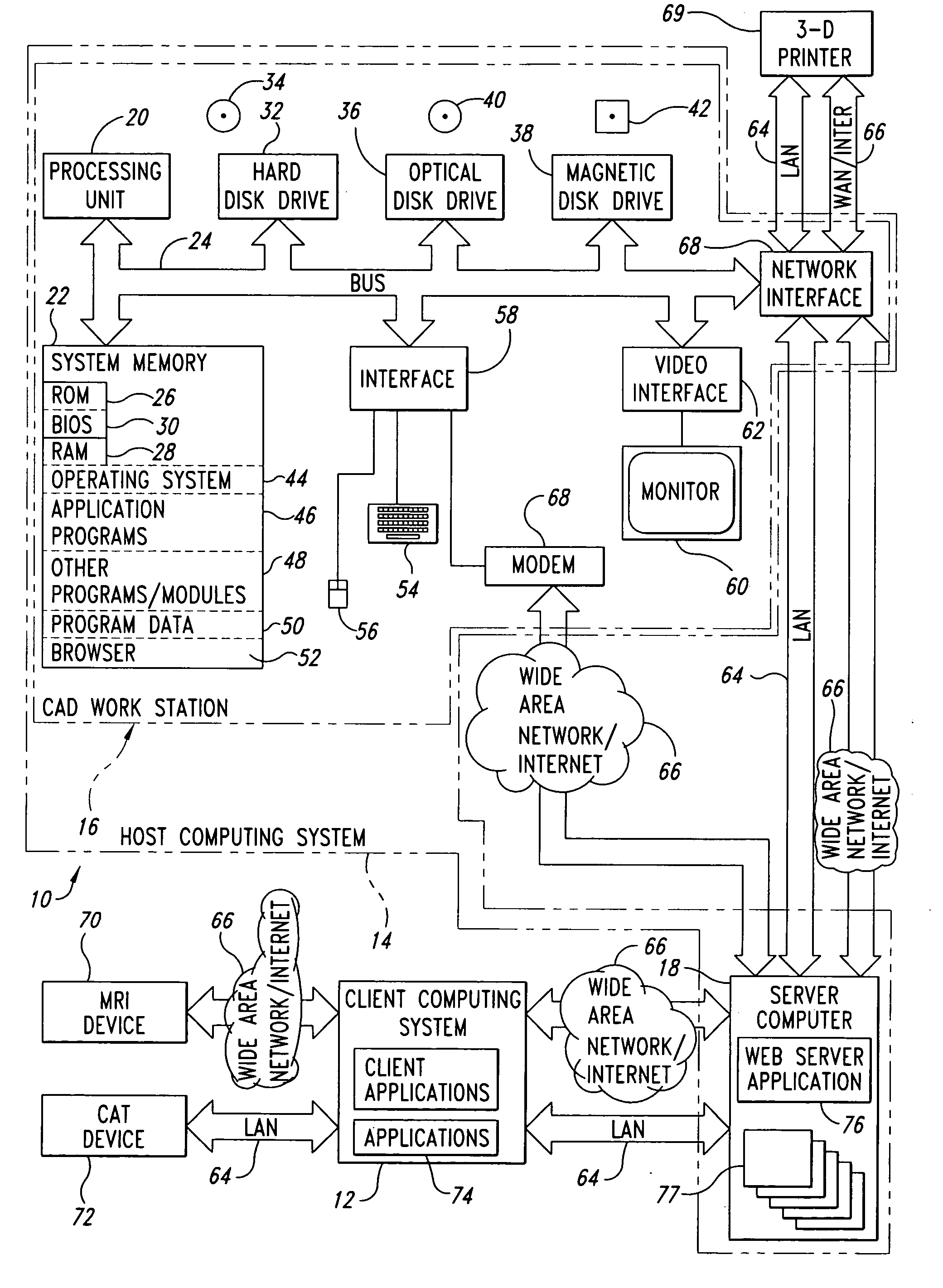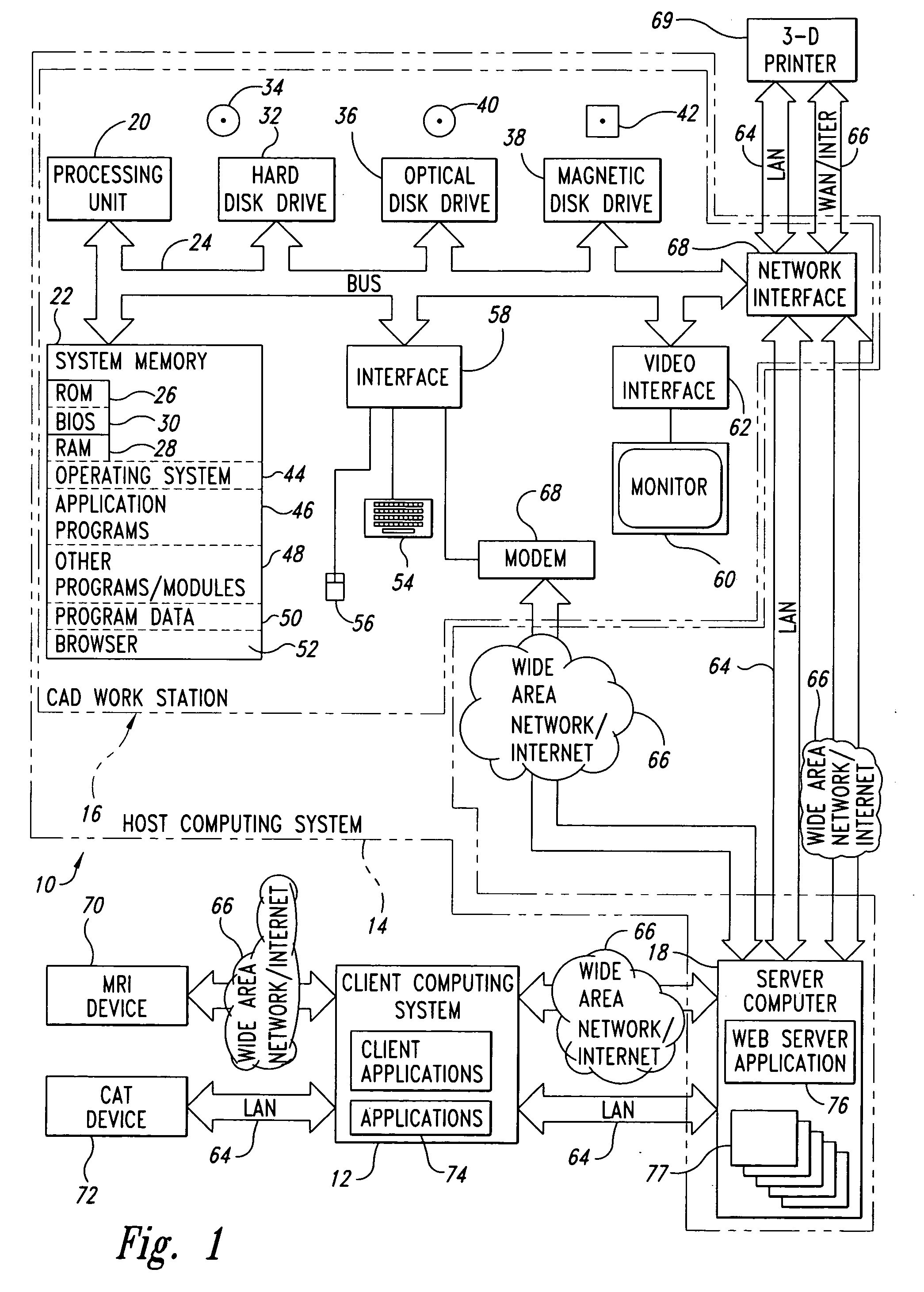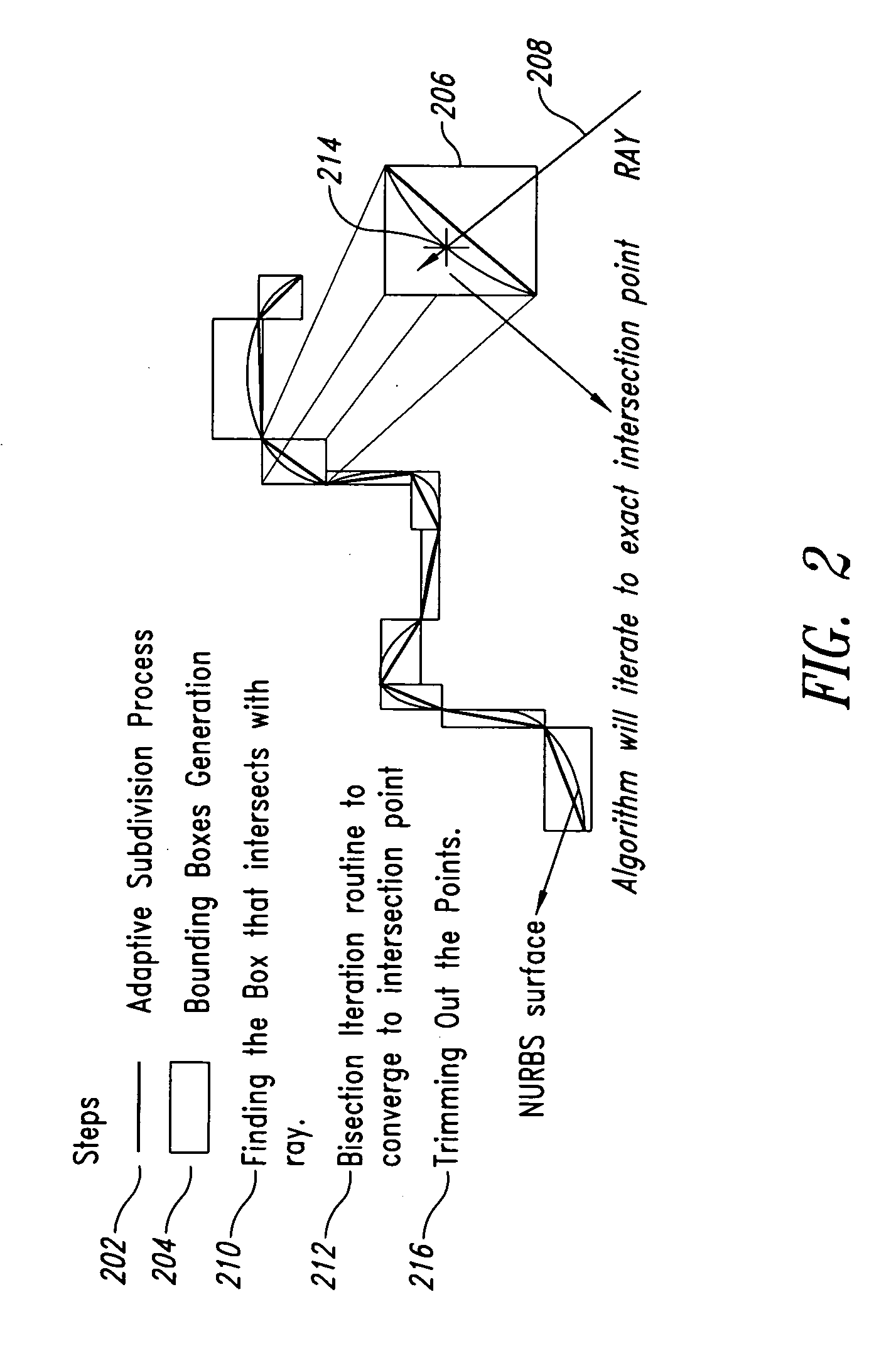Apparatus, method and article for direct slicing of step based nurbs models for solid freeform fabrication
a technology of step-based nurbs models and freeform fabrication, applied in the field of rapid prototyping, can solve the problems of large stl file sizes, and significant affecting the accuracy and quality of final parts produced by cad objects, so as to reduce or eliminate the problem associated, reduce the pre-processing time, and improve the model accuracy
- Summary
- Abstract
- Description
- Claims
- Application Information
AI Technical Summary
Benefits of technology
Problems solved by technology
Method used
Image
Examples
case study examples
Implementation and Case Study Examples
[0122] The algorithms may for example, be implemented in C++. Application of these algorithms to a variety of model shapes including simple NURBS surfaces, as well as complex curved NURBS surfaces provide three test cases, described below. FIG. 3 gives the generalized algorithm for ray-casting of NURBS surfaces that includes all of the steps outlined above.
[0123]FIG. 6 details the data process planning algorithm 600 from the CAD file input stage to that of the final fabrication stage. For heterogeneous models, intersections of a ray to each geometric body are calculated in sequence. Thus the material associated with the geometric body being sliced can be captured and stored in the slicing data structure.
[0124] In step 602, the CAD workstation 16 receives a CAD file, for example, in STEP format. In step 604, the CAD workstation 16 operates on the CAD file using B-rep view tools. The CAD workstation 16 slices the resulting data using a slicing m...
PUM
 Login to View More
Login to View More Abstract
Description
Claims
Application Information
 Login to View More
Login to View More - R&D
- Intellectual Property
- Life Sciences
- Materials
- Tech Scout
- Unparalleled Data Quality
- Higher Quality Content
- 60% Fewer Hallucinations
Browse by: Latest US Patents, China's latest patents, Technical Efficacy Thesaurus, Application Domain, Technology Topic, Popular Technical Reports.
© 2025 PatSnap. All rights reserved.Legal|Privacy policy|Modern Slavery Act Transparency Statement|Sitemap|About US| Contact US: help@patsnap.com



